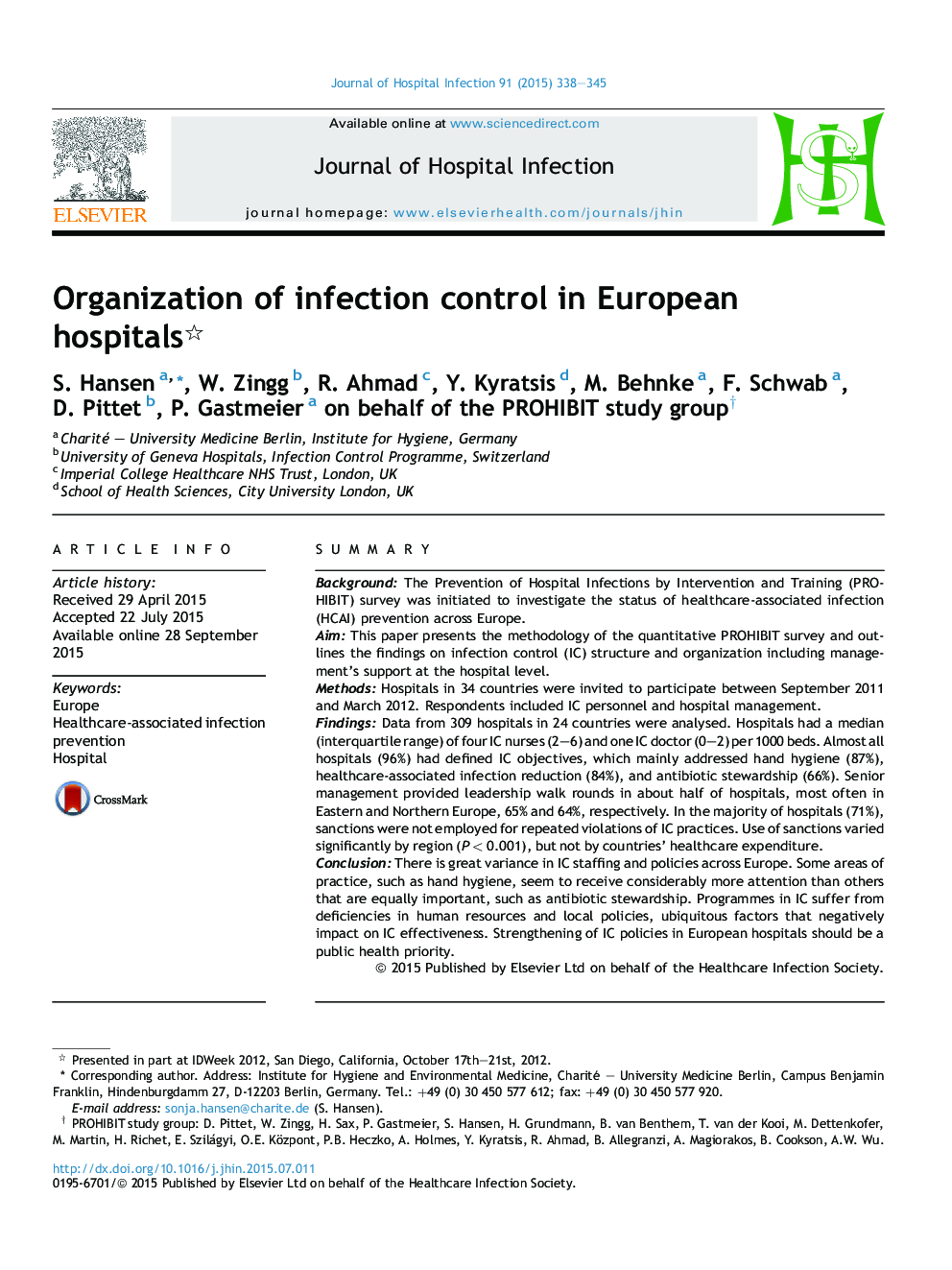| Article ID | Journal | Published Year | Pages | File Type |
|---|---|---|---|---|
| 3371375 | Journal of Hospital Infection | 2015 | 8 Pages |
SummaryBackgroundThe Prevention of Hospital Infections by Intervention and Training (PROHIBIT) survey was initiated to investigate the status of healthcare-associated infection (HCAI) prevention across Europe.AimThis paper presents the methodology of the quantitative PROHIBIT survey and outlines the findings on infection control (IC) structure and organization including management's support at the hospital level.MethodsHospitals in 34 countries were invited to participate between September 2011 and March 2012. Respondents included IC personnel and hospital management.FindingsData from 309 hospitals in 24 countries were analysed. Hospitals had a median (interquartile range) of four IC nurses (2–6) and one IC doctor (0–2) per 1000 beds. Almost all hospitals (96%) had defined IC objectives, which mainly addressed hand hygiene (87%), healthcare-associated infection reduction (84%), and antibiotic stewardship (66%). Senior management provided leadership walk rounds in about half of hospitals, most often in Eastern and Northern Europe, 65% and 64%, respectively. In the majority of hospitals (71%), sanctions were not employed for repeated violations of IC practices. Use of sanctions varied significantly by region (P < 0.001), but not by countries' healthcare expenditure.ConclusionThere is great variance in IC staffing and policies across Europe. Some areas of practice, such as hand hygiene, seem to receive considerably more attention than others that are equally important, such as antibiotic stewardship. Programmes in IC suffer from deficiencies in human resources and local policies, ubiquitous factors that negatively impact on IC effectiveness. Strengthening of IC policies in European hospitals should be a public health priority.
